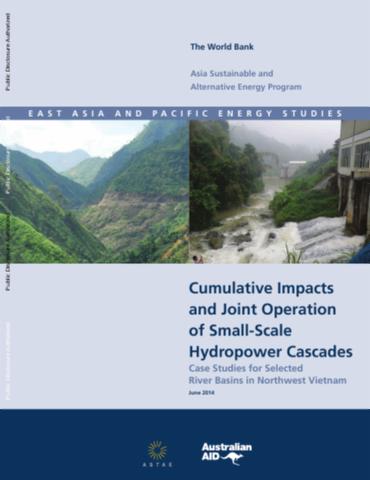Resource information
Increasing energy demands and concerns about global warming call for an increase in energy generation from renewable sources. Small hydropower plants represent a significant contribution to meet this demand. But the optimal use of this resource in a sustainable manner still remains a challenge. A cascade of small dams may have detrimental impacts on the environment and water use without implementation of proper mitigation measures and planning. To obtain more insight in the consequences of hydropower cascades and possibilities to improve the cascade planning process in order to reduce such impacts, the Vietnamese Ministry of Industry and Trade and the World Bank jointly initiated the study on cumulative impacts and joint operation of small-scale hydropower cascades Supported by the Renewable Energy Development Program (REDP) in Vietnam. Chapter two provides a brief background on the small-scale hydropower development in Vietnam including its current planning procedures, while Chapter three provides a description of the six studied river basins. Chapter four describes the approach, methods and definitions of the study. During the first phase of the study all six rivers were screened for potential significant cumulative impacts. The results of this screening were presented in a separate report, of which the summary is given in chapter five. This screening showed that for four of the rivers significant cumulative impacts can be expected, which merited further detailed analysis. These four rivers are Ngoi Xan, Nam Tha, Nam Chien and Sap. For each of the four detailed study cases a description of the river basin and hydropower cascade has been made, the hydrological and environmental impacts were assessed and opportunities for joint operations quantified. This report presents summaries of the cumulative impact analyses (chapter six) and draws general conclusions with respect to present and future environmental conditions (chapter seven). It also summarizes the results of the optimization modeling for each cascade (chapter eight) and provides recommendations for future planning and cascade operation (chapter nine).


